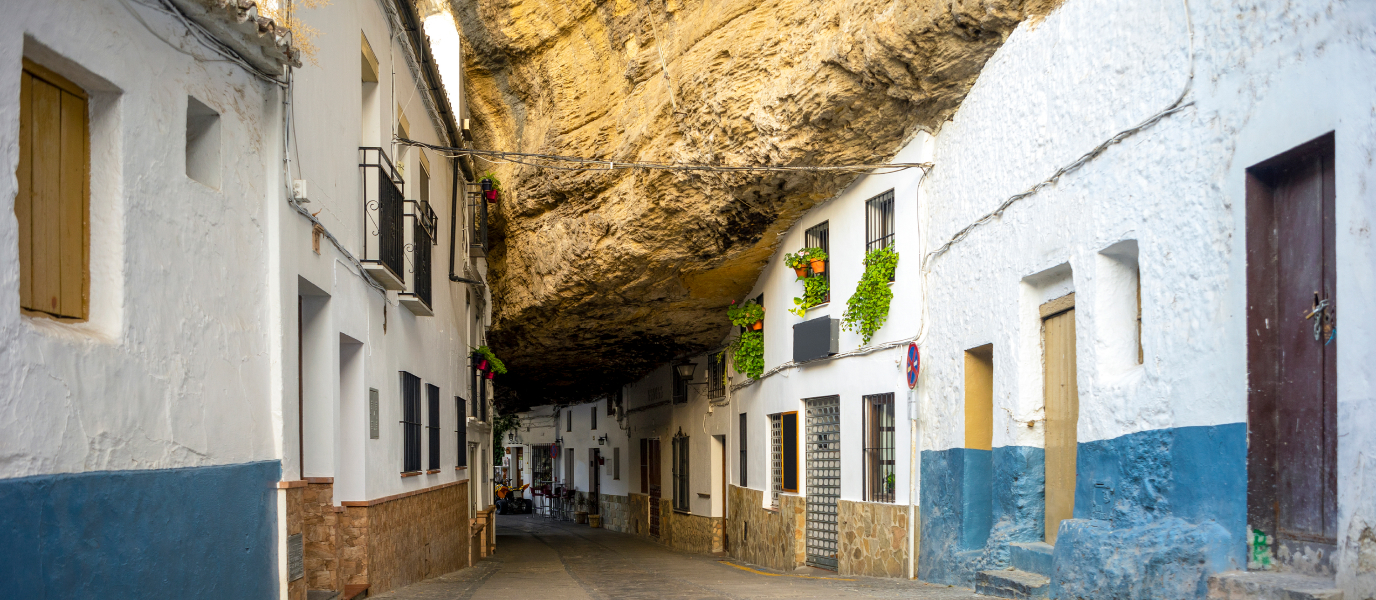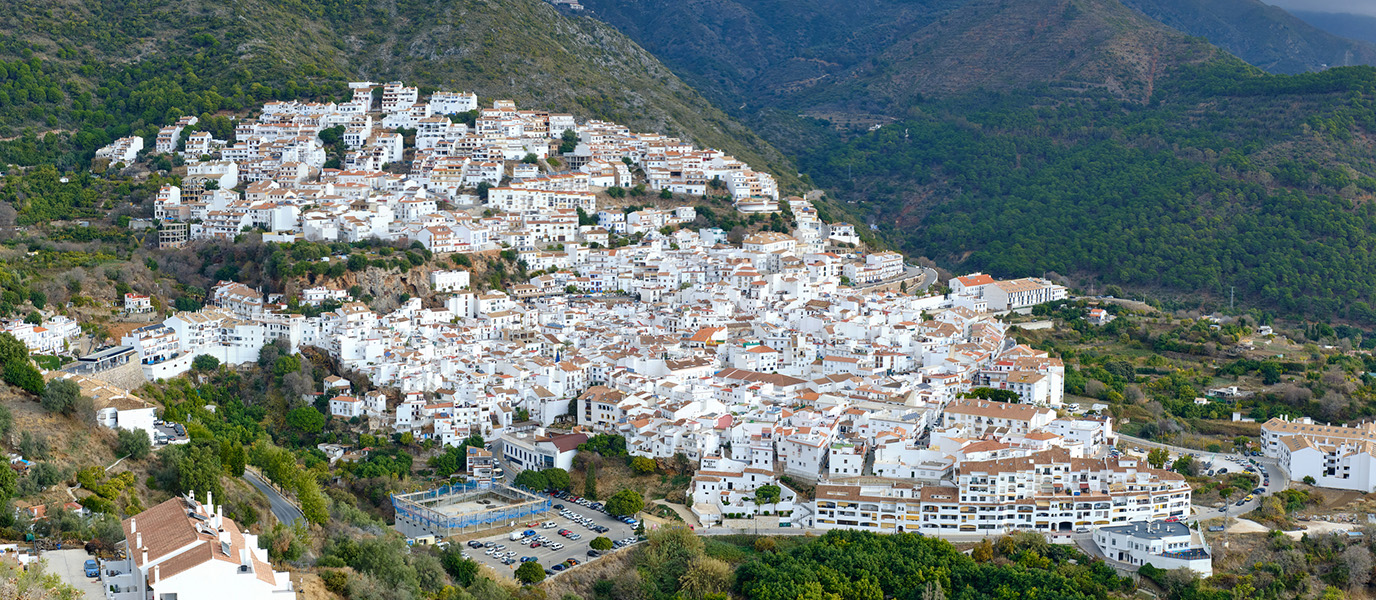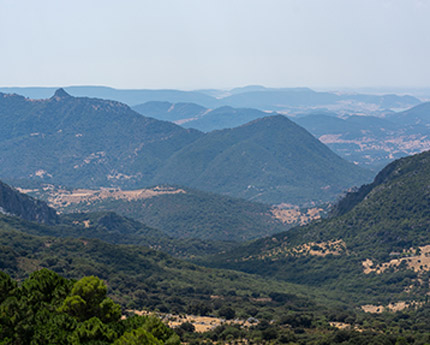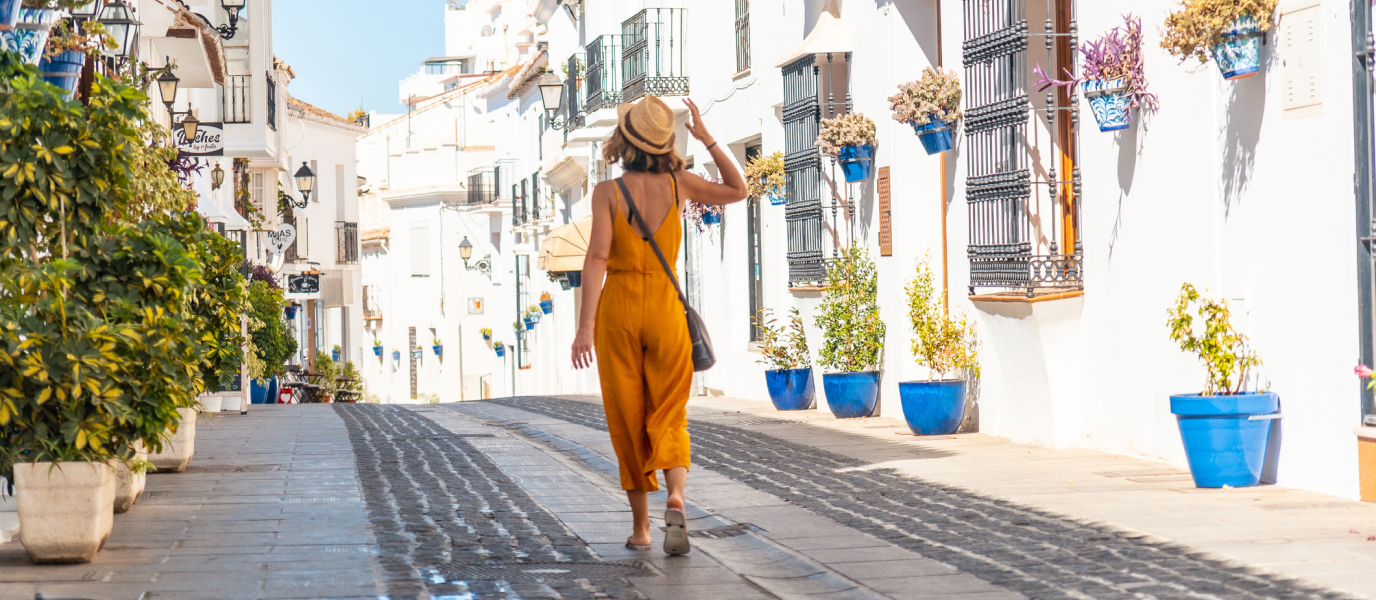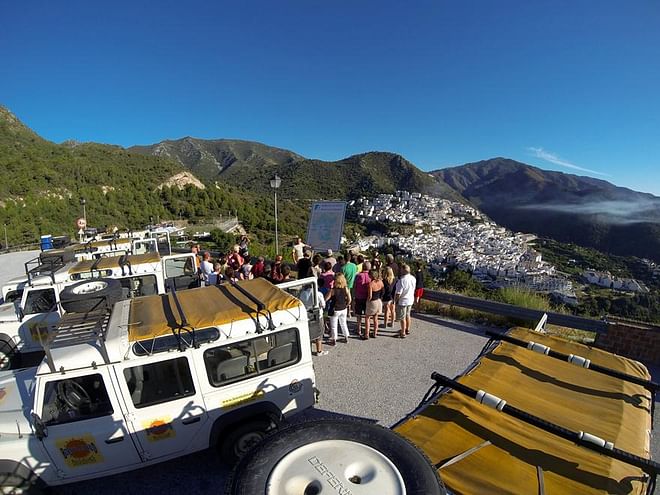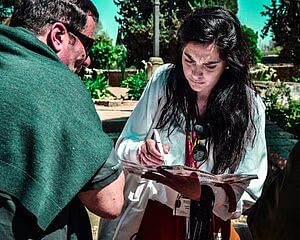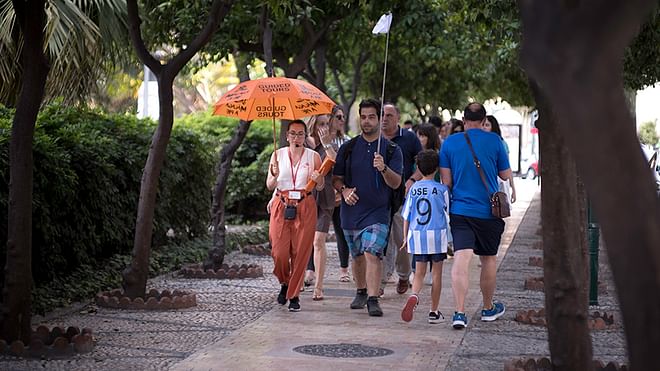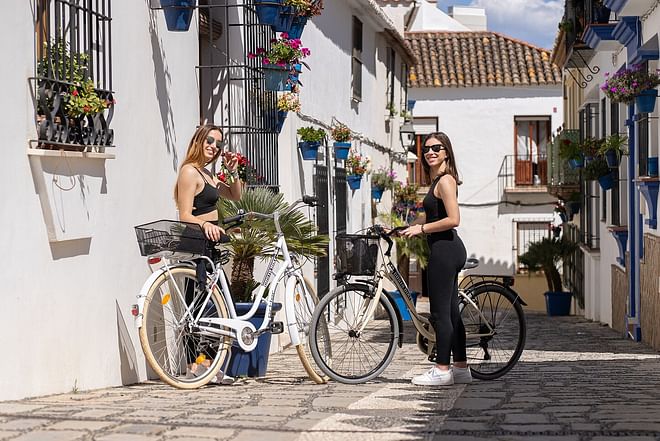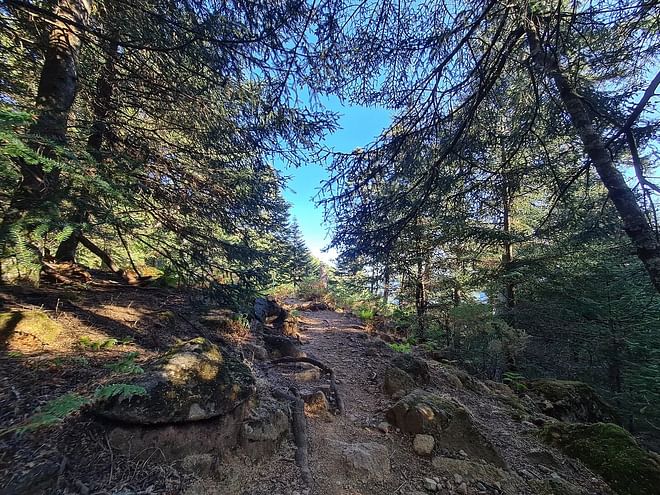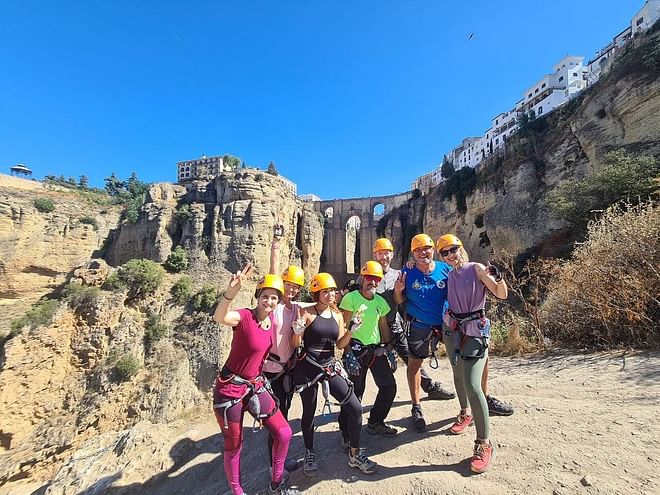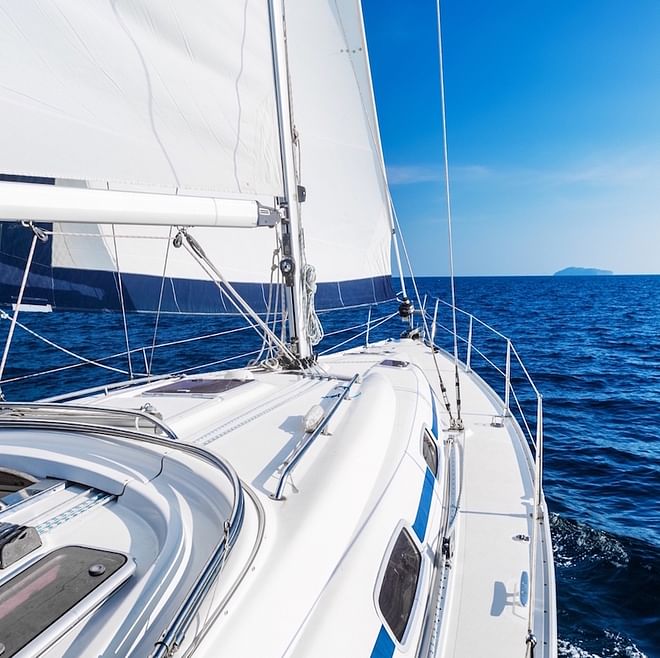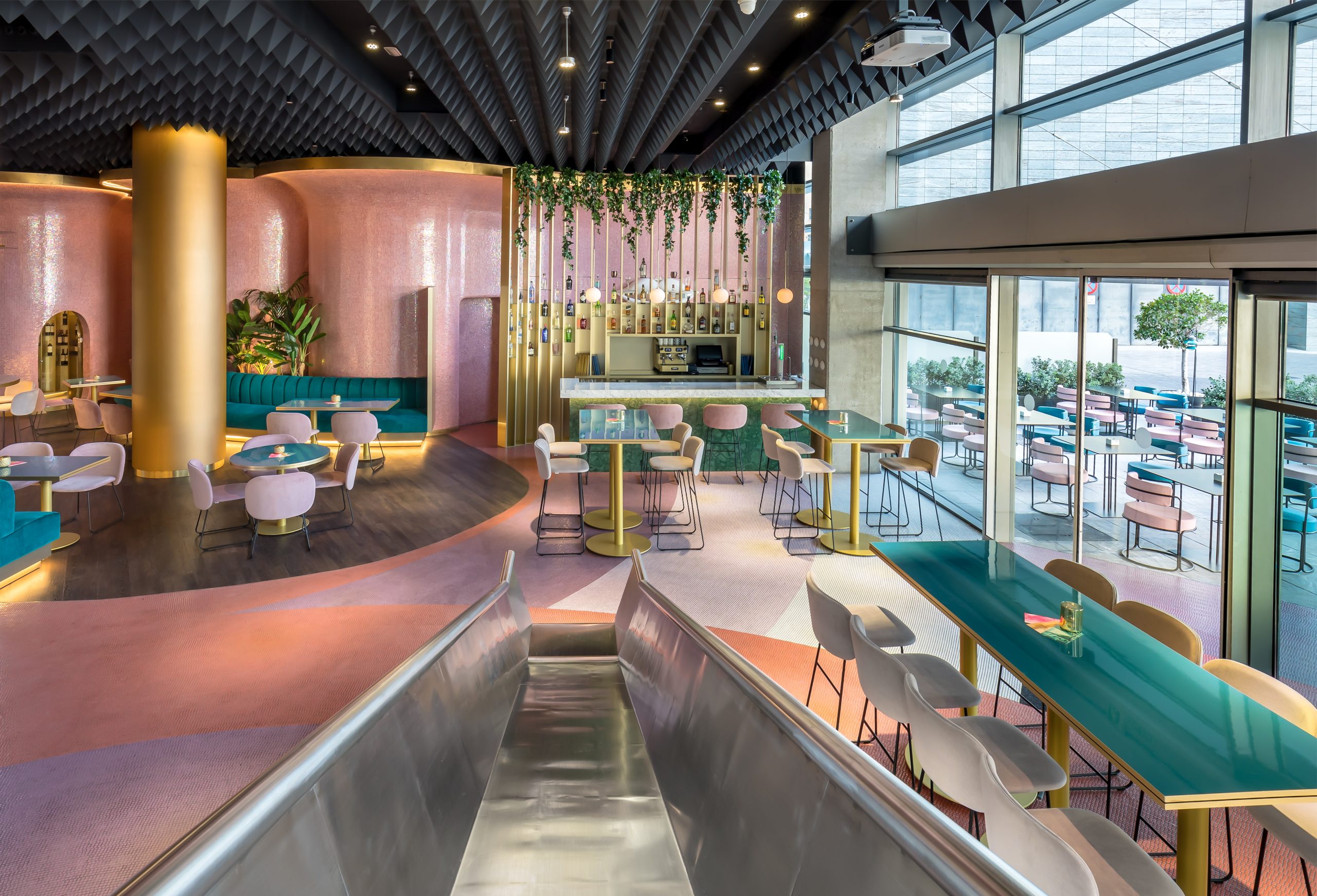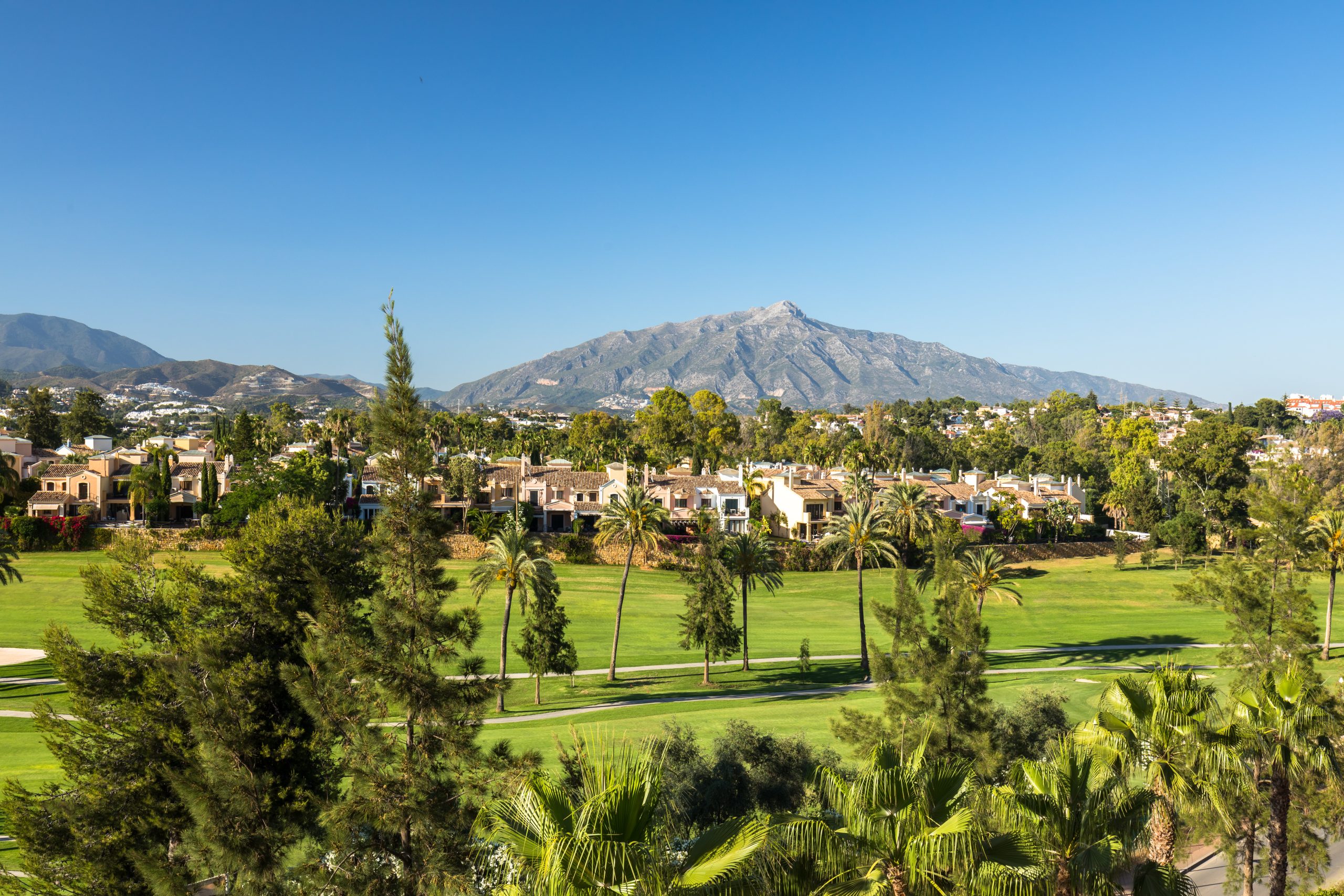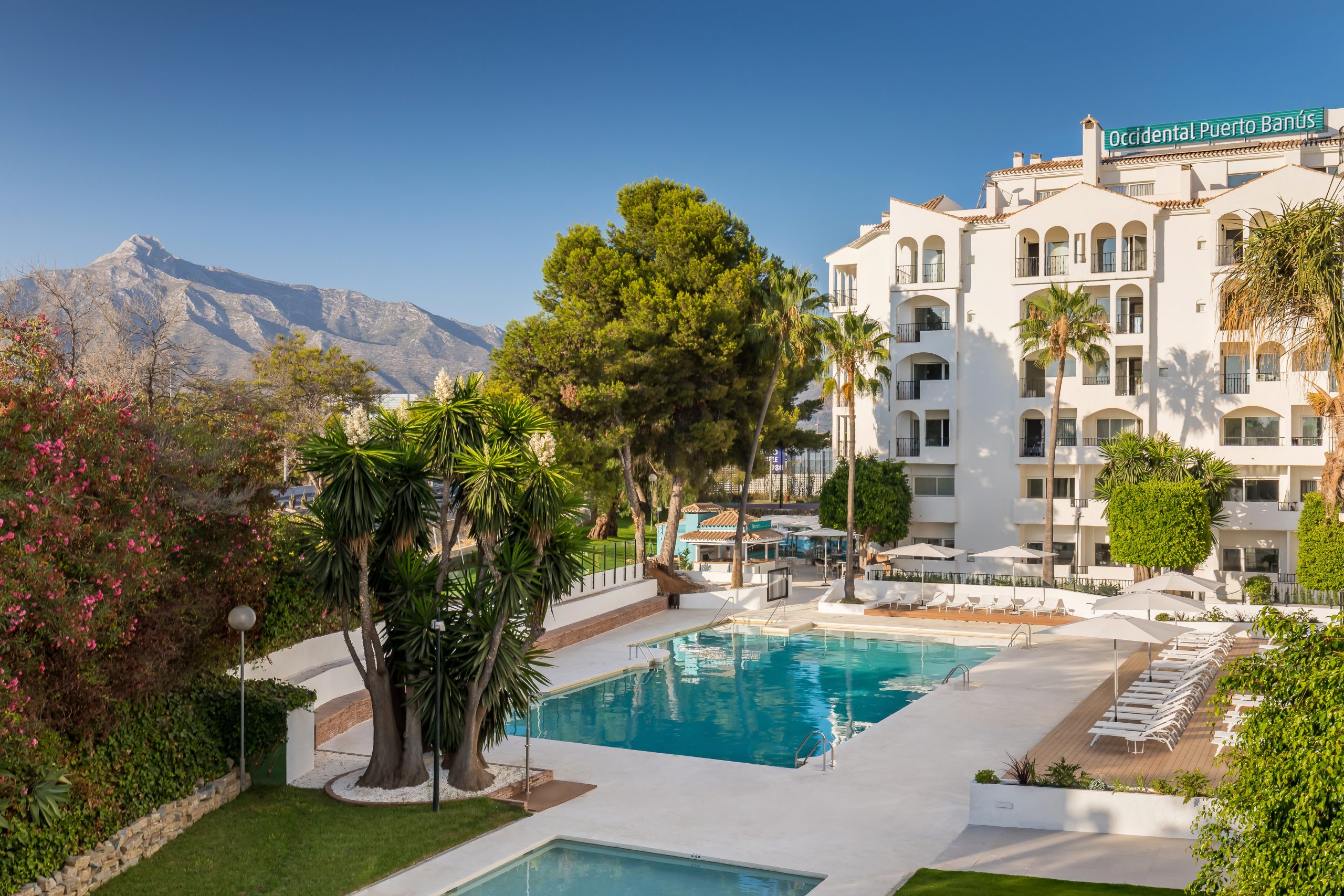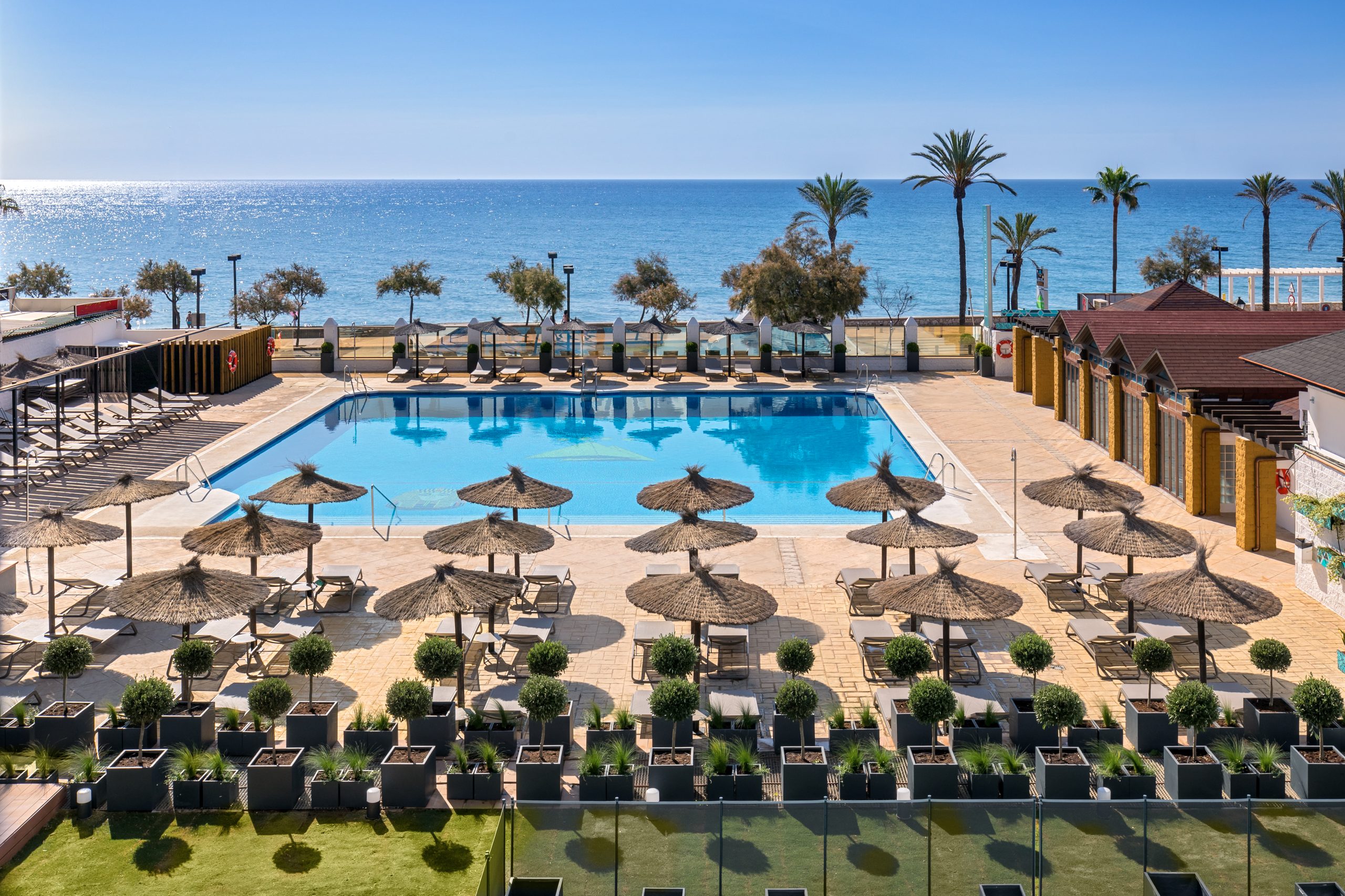When visiting Setenil de las Bodegas for the first time you are likely to be taken aback upon seeing that most of the town is situated beneath immense karst rocks.
What comes after that initial surprise is awe, for a type of architecture that dates back over 5,000 years and that has made Setenil de las Bodegas one of the most extraordinary towns on the so-called Route of the White Villages (vincular a URL correspondiente). Some of its streets are even “covered” by the enormous rocks.
Before embarking on a walk through the streets and squares of Setenil de las Bodegas, be warned that it is not an easy town through which to navigate. Due to a considerable difference in elevation between the lower part (on the banks of the Trejo river) and the upper part, its inclines are on the steep side. For this reason, we recommend taking it slowly and making the most of much-needed breaks to admire the town’s pretty whitewashed houses adorned with flower pots and iron-barred windows.
The origins of Setenil de las Bodegas
Remains of human presence from over 5,000 years ago have been found in some of the caves in Setenil de las Bodegas, demonstrating that the people who inhabited this area of the Iberian Peninsula in ancient times knew about the existence of the cavities, which they used as occasional dwellings.
Nevertheless, it wasn’t until the Late Middle Ages when a permanent settlement was founded. Later on, during the Almohad period, a castle was built in the area known as La Villa, from which the current layout of Setenil de las Bodegas was developed.
After the arduous conquest of the town (Muslim troops resisted seven sieges), Setenil was repopulated by noblemen and became a place of great importance, coming to have its own hospital and seminary.
Until the mid-seventeenth century, Setenil de las Bodegas was administratively dependent on the nearby town of Ronda (vincular a URL correspondiente). At that time, the wine industry, after which the village is named, began to develop. The town was surrounded by numerous vineyards whose grapes were used to make the wine that was then deposited in the many wine cellars, both in homes and in the caves that still exist on the outskirts of the village.
The phylloxera epidemic, which also reaped havoc in the rest of Europe, put an end to wine production in the town. However, over recent years vines have been replanted by some local producers in an effort to produce wine once again.
What to see in Setenil de las Bodegas
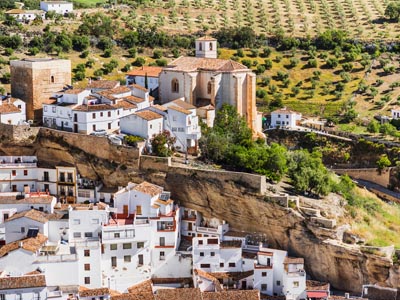
First and foremost, the most important thing to see in Setenil de las Bodegas is the village itself, which is made up of several streets concentric to the rivers that cross the town. Notice how the façades of the houses barely protrude even just a few centimetres from the rock into which they are built.
Setenil, however, also has a whole host of other buildings and urban spaces of particular interest, which are listed below:
- Calle Cuevas de la Sombra and Calle Cuevas del Sol: Located in the lower part of the town, these two streets form its most striking and quintessential image, as they are partly covered by immense rocks. Here you can grab a table at the town’s loveliest bar terraces, both in winter (Cuevas del Sol) and summer (Cuevas de la Sombra).
- The castle and fortified tower: Built during the Almohad Caliphate (twelfth to thirteenth centuries), a large part of the town centre was developed around this fortress. We recommend climbing up to the top of the tower and the viewpoint situated next to it, from where you will have magnificent views of the entire town and the surrounding mountains.
- The Arab cistern: Also built during Muslim period, the cistern is partially built into the rock on which it stands.
- Church of Nuestra Señora de la Encarnación: This place of worship, built between the fifteenth and sixteenth centuries, is impressive due to its size, which indicates its past importance. Inside, of particular note is the statue of the crucifix, which dates from the sixteenth century.
- Former Town Hall: This attractive sixteenth-century building now houses the local tourist information office. Inside, you can admire an intricate Mudéjar coffered ceiling. It is the only building of this type that still stands in the province of Cádiz.
- Hermitage of San Sebastián: Situated on the outskirts, in the upper part of the town, the hermitage was built in the late fifteenth century, soon after the conquest by the Catholic Monarchs.
- Holy Week: The hilly terrain of Setenil de las Bodegas means that the town’s Holy Week processions are some of the most scenic and punishing in Andalusia. One of the most famous is the so-called procesión del Encuentro, on Easter Sunday.
Setenil de las Bodegas: where to eat
More than just eating, Setenil de las Bodegas is a perfect place to go for tapas, and very good tapas at that. This is in part thanks to its proximity to the Sierra de Grazalema and the Sierra de las Nieves mountain ranges, where cheese and meat (such as that of the retinto breed) and especially-succulent olive oils are produced. What’s more, the sea is just over an hour away, which means that deep-fried and grilled fish are also staples of the town’s bars and terraces.
Read on for some of the most noteworthy establishments:
- El Almendral (Carretera Setenil-Puerto del Monte, km 0): On the outskirts of the town and within the hotel of the same name, this restaurant offers purely Mediterranean cuisine and dishes such as fried potatoes with Los Montes chorizo, or baby broad beans and ham cooked with Pedro Ximénez sherry wine.
- Bar La Escueva (Cuevas del Sol, 64): Built completely under the rock, both the inside bar and the outside terrace. It serves generous portions of meat and fish, in addition to some of the most popular hamburgers in Setenil.
- Bar Frasquito (Cuevas del Sol, 75): Serving conventional tapas and larger portions, with some specialities such as the prawn stew, aubergines, flamenquines (Serrano ham wrapped in pork loin coated with breadcrumbs and deep fried) and baby cuttlefish.
- Cafetería Sol y Sombra (Cuevas de la Sombra, 14): Here you can also order tapas and larger portions although its strong point is its coffee, accompanied by original pastries and sweet delights, served in a pleasant setting.





























































